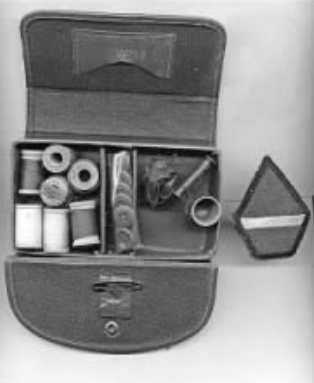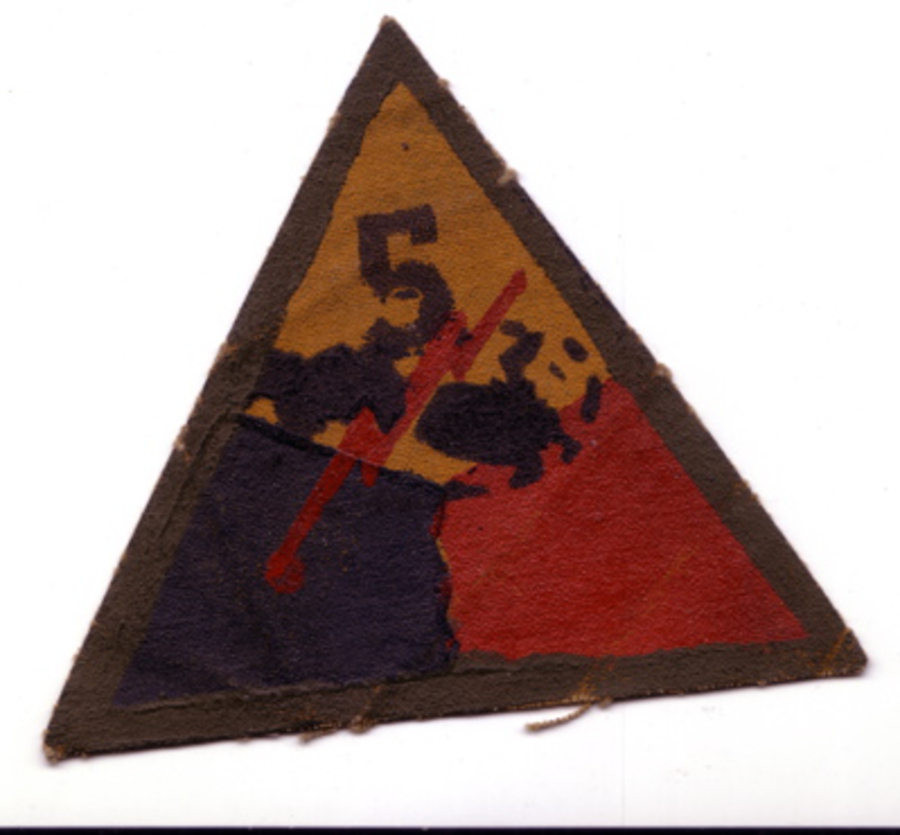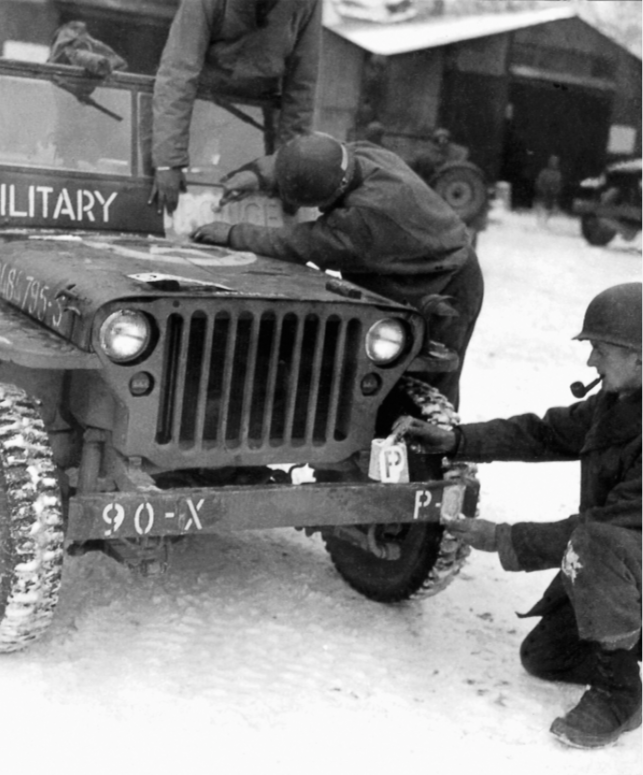Special Effects
The 406th Combat Engineers performed construction, provided security, and ran bulldozers that made fake tank tracks to enhance visual deceptions. However, their most significant contribution was producing special effects that made deceptions more authentic and less discoverable.

(Photo: "The Ghost Army," c. 1944)
Lt. Fred Fox believed the Ghost Army needed to think of itself more as a theater troupe than as an army outfit. Thus, he is considered the mastermind behind the military's use of theatrical special effects.

Lt. Fox (Photo: Courtesy of Donald Fox)
"It was like a traveling road show that went up and down the front lines impersonating the real fighting outfits."
-Lt. Fred Fox, 23rd Headquarters Special Troops (Official History, National Archives, Sept. 1945)

(Dayton Herald, 21 Feb. 1946)
Their role involved making fake patches for uniforms, marking vehicles to impersonate infantry divisions, and visiting nearby towns where they communicated false stories to mislead the enemy concerning Allied activities.
"[They] used to buy all [their] art supplies in Luxembourg City, right on the front line bordering Germany. There were art supply stores open and printing places open. There was a war going on but people needed to make a living and life goes on."
-Elizabeth Sayles, discussing her father's Ghost Army experiences (Personal Interview, 16 March 2021)

Sewing kit (Photo: Citizen's Voice, 18 June 2017)

Fake patch (Artifact: Courtesy of Stanley Nance/Ghost Army Legacy Project, c. 1944)

"Two GIs stencil fake markings on a jeep." (Photo: National Archives, c. 1944)
"The fake patches and phony bumper markings on trucks were [designed] to communicate misinformation. If someone was wearing a fake patch that said 75th Infantry, that communicates to any enemy agent who sees it that the 75th Infantry is in the area when there wasn't a real unit there."
-Rick Beyer (Personal Interview, 26 Dec. 2020)